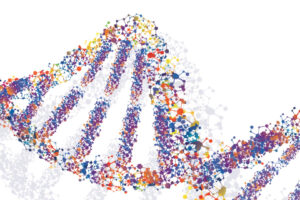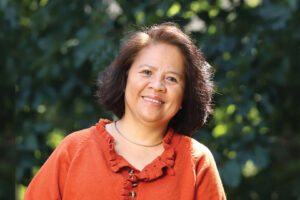Radiation therapy is one of the most powerful and successful tools to overcome cancer. But for women with early-stage breast cancer, studies have found a link between radiation and a higher risk of heart and lung problems up to 20 years after treatment. This is especially true for women with cancer in the left breast, which is very close to the heart and lungs.
Because we live in an age where the majority of women diagnosed with breast cancer will be cured, it is critical that we minimize the long-term side effects of radiation therapy. As a radiation oncologist, my goal is to deliver the precise amount of treatment to the tumor without damaging healthy tissue in the rest of the body. When it comes to breast cancer, this effort can be especially tricky.
Since February is American Heart Month, I thought it was appropriate to talk about the benefits of prone-position (downward-facing) radiation treatment for women with breast cancer. Many hospitals here in New Jersey offer this type of therapy which I wholeheartedly use and support. I’ve been performing this type of protective radiation therapy for patients for more than five years and have found that it dramatically reduces the dosage that the heart receives in a majority of women.
A change of position lessens radiation to healthy organs
A recent study found that when the breast is treated with radiation away from the heart and lungs while the woman is lying face down, as opposed to the traditional supine position on the back, there was about an 86 percent reduction in the amount of lung tissue irradiated in the right breast and a 91 percent reduction in the left breast. Additionally, administering prone-position radiation therapy in this fashion does not inhibit the effectiveness of the treatment in any way. It can also be especially useful treating women with larger breasts.
Performing this simple but highly effective style of radiation therapy on the breast still allows the radiation oncologist to target the affected tumor while protecting most of the radiation exposure to the heart, lungs and chest tissue. Keep in mind this style of treatment is for cancer that has not spread to other parts of the body and is contained exclusively in the breast.
Each patient’s medical condition, history and cancer is unique and prone-position radiation therapy may not be right for every patient. But if you are battling breast cancer, talk with your oncologist about the availability and possibility of this option. Once your breast cancer treatment is behind you, you want to be sure to enjoy a long and healthy future.
Comprehensive and personalized cancer prevention and treatment
The CentraState Statesir Cancer Center offers prone-position radiation therapy for breast cancer treatment. For women having their mammography done at CentraState, our Radiology Department has been designated as a Diagnostic Imaging Center of Excellence by the American College of Radiology and is only the second hospital in the state to earn this distinction. The Radiation Oncology Department offers people fighting cancer unrivaled one-on-one personalized care supported by the latest clinical excellence and warm and caring cancer treatment specialists. The Breast Cancer Program offers state-of-the-art services, expertise and technology for detecting, diagnosing, treating and helping patients recover from the disease. For more information, visit centrastatecancercenter.com or call (855) 411-CANCER.
 Edward M. Soffen, MD, FACP is a board-certified radiation oncologist and medical director of the Radiation Oncology Department at CentraState Medical Center in Freehold. He can be reached at Princeton Radiation Oncology by calling (732) 303-5290.
Edward M. Soffen, MD, FACP is a board-certified radiation oncologist and medical director of the Radiation Oncology Department at CentraState Medical Center in Freehold. He can be reached at Princeton Radiation Oncology by calling (732) 303-5290.





